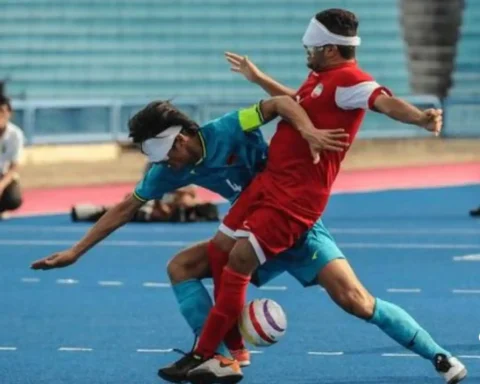As the crowd roars, athletes whoosh fast on their wheelchairs, and there goes a perfect shot - Paralympic basketball, or wheelchair basketball, is a game that will leave you in awe. It is truly inspiring to see the absolute determination of the paralympic players as they perform on their wheelchairs, leaving everyone in astonishment.
However, with wheelchairs in the place of running shoes, it is natural to wonder... Are paralympic basketball rules different from traditional basketball?
Table of Contents
Core Similarities in Traditional and Paralympic Basketball Rules
In essence, both paralympic basketball and traditional basketball share the same goals, with the aim being to outperform your opposing team by scoring more baskets.
The court dimensions remain the same - 28 metres long and 15 metres wide, as does the height of the basket. Players can score points in the same way as well, with two points for every basket, one point per free throw, and three points for a shot made behind the arc of the three-point line.
The concept of teamwork is the same too. With effective communication and strategic movements, players in paralympic basketball also rely on each other to win the game.
While variations exist in the two versions to ensure comfort and fairness for athletes with varying abilities, the spirit of basketball remains the same. Skillful movements and strategic execution are necessary for success in both Paralympic and Traditional Basketball.
YOU MIGHT BE INTERESTED IN: From Disability to Triumph: Azeem Amir's Remarkable Career in Blind Football
The Differences in Paralympic Basketball Rules
The following are the basic differences in paralympic basketball rules compared to traditional basketball as per the International Wheelchair Basketball Federation (IWBF), which is the governing body for wheelchair basketball around the globe.
Scoring
- A free throw goal gives the team 1 point.
- A goal from the two-point field region provides the team with 2 points.
- A goal from the three-point region offers the team with 3 points.
Both teams have 24 seconds to score a basket. If the team with the ball fails to do so and exceeds the time limit, the right of play is given to the opposing team.
Dribbling
Athletes are permitted to wheel the chair and bounce the ball both at the same time. However, if the ball is picked and positioned on the athlete's lap, they can only push two times before shooting, dribbling, or passing the ball again.
Paralympic Basketball does not have the double dribbling rule. Moreover, a travelling violation is considered when an athlete pushes their wheelchair more than two times while having the ball without dribbling. Additionally, a player is not permitted to touch the ground with their feet while they have the ball.
Fouls
When it comes to charging, blocking, and other violations, the wheelchair is seen as a part of the player's body, and they are considered responsible for its impermissible contact on the court. A player who has caused an offence cannot stay in the key area for more than three seconds.
Also, an athlete who has lifted their legs to acquire an advantage or has lifted out of their wheelchair is posed with a technical foul. To avoid such situations, all athletes must remain seated in their wheelchairs and are not allowed to use their lower limbs for purposes such as steering the wheelchair.
In circumstances where the player falls out of their wheelchair, the referee will stop the game if they believe there is a risk of injury to the player; if not, the game will continue.
The Beauty of Paralympic Basketball
While some rules may differ, at the core of the games, both paralympic and traditional basketball are the same sport. Both the games celebrate the skill of the players and their teamwork, with the audience hooting at every basket.
The variations in Paralympic basketball are only there for one reason - more inclusivity. Paralympic games, in general, strive to give everyone equal opportunities to participate in the beauty and community of sports.
Paralympic athletes from all around the world have more than fulfilled this aim by showing us their seemingly infinite perseverance and dedication at every game.
ALSO READ: Understanding the Key Differences Between the Special Olympics and the Paralympics
Conclusion
The next time you watch a Paralympic basketball game, watch as an informed observer. Be sure to appreciate the Paralympic basketball rules and systems truly, and you'll see the sheer dedication and determination that make Paralympic sports what they are.
For instance, watching an athlete with a limb deficiency execute a jaw-dropping manoeuvre becomes even more awe-inspiring. Get to see what's behind a seemingly simple shot - years of training and unshakeable will.
Go ahead and enjoy paralympic athleticism for what it really is.
FAQs
How do you play para basketball?
Paralympic basketball is played differently from traditional basketball since it is played on wheelchairs.
What is Paralympic basketball called?
Paralympic Basketball is also known as wheelchair basketball.
How is wheelchair basketball different to normal basketball?
Wheelchair basketball involves athletes using wheelchairs to accommodate their physical disabilities.








